Lapsang Souchong
Lapsang Souchong has a rich history that includes mystical origins, widespread trade influence, and modern-day production methods.
Origins and Legends
Lapsang Souchong is often considered the first black tea in history. It hails from the Wuyi region of Fujian, China. Legends suggest that its distinctive smoky flavor was discovered accidentally when villagers dried tea leaves over pine fires to hasten drying. This unique method gave the leaves their characteristic smoky aroma.
The name "Souchong" refers to the fourth and fifth leaves of the tea plant, which are considered less desirable for traditional green and oolong teas. Hence, producers used these leaves to create a new variety.
Bestsellers
Spread to the West
European traders, particularly the British, played a significant role in popularizing Lapsang Souchong in the 17th century. The tea became a staple in British tea culture due to its unique flavor profile, which set it apart from other teas.
Merchant ships transported it across oceans, making stops at ports like London and Amsterdam. Over time, its appeal grew among Western tea drinkers, cementing its status as a premium tea variety.
Modern Production
Today, Lapsang Souchong is produced not only in China but also in Taiwan and other regions. While traditional methods involving smoke-drying over pinewood fires remain popular, some producers use alternative techniques to achieve the smoky flavor, such as adding natural flavors during processing.
Modern production emphasizes quality and consistency. Producers follow strict guidelines to ensure that each batch maintains the distinctive smoky character. This dedication to tradition and innovation allows Lapsang Souchong to retain its esteemed place in the world of tea.
Processing Techniques
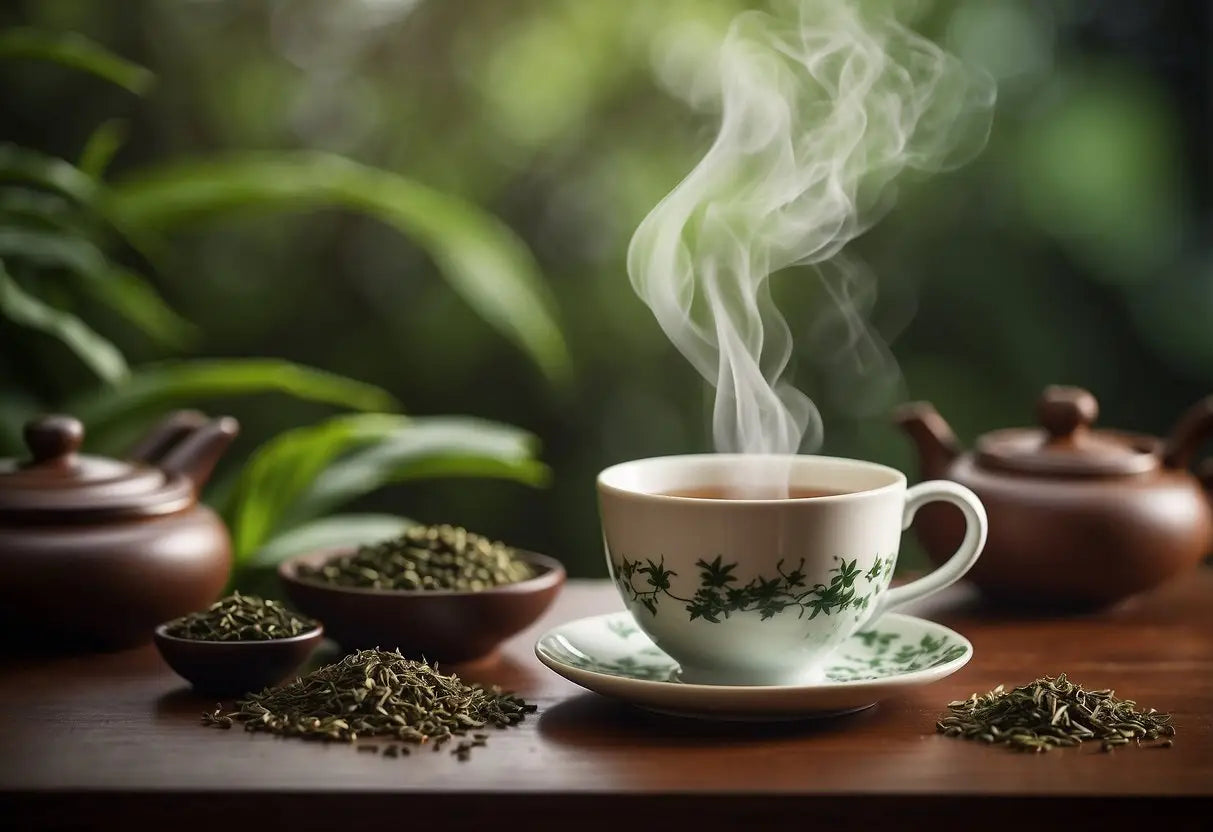
Lapsang Souchong tea undergoes a unique processing method that creates its distinctive smoky flavor. This process involves several steps, each contributing to the tea's final taste and aroma.
Withering
Withering is the first critical step. Freshly plucked leaves are spread out in thin layers on bamboo trays. You’ll find this process takes place in well-ventilated areas to reduce moisture content. This step can last from several hours to over a day, depending on the ambient temperature and humidity. The goal is to make the leaves pliable, preparing them for the next stages.
Rolling
Rolling twists and breaks the withered leaves to release essential oils. You’ll see two common techniques: hand-rolling and machine-rolling. Hand-rolling is a traditional method often used for high-quality batches, while machine-rolling is more efficient for larger quantities. This step is crucial for enhancing the tea's flavor and allowing better infusion of the smoky essence later.
Fermentation
In fermentation, the rolled leaves are left in a controlled environment to oxidize. You’ll notice the leaves change color, typically becoming darker as enzymes react with oxygen. This stage can last from 1 to 3 hours, depending on desired flavor strength. The leaves are carefully monitored to achieve the characteristic depth and complexity that Lapsang Souchong is known for.
Firing
Firing locks in the tea's flavors and halts oxidation. For Lapsang Souchong, pinewood is often used, giving the tea its signature smoky aroma. The leaves are either pan-fired or placed in bamboo baskets suspended over burning pinewood. This stage ensures the tea has a dry, crisp texture and the unmistakable smoky essence that sets it apart.
By following these processing techniques, Lapsang Souchong achieves its unique, robust profile that tea enthusiasts cherish.
Characteristics and Flavor Profile
Lapsang Souchong is a black tea known for its distinctive smoky aroma and flavor. This tea is traditionally smoked over pinewood fires, imparting it with its unique characteristics.
Lao Ban Zhang
Aroma: The strong, smoky scent is the defining feature. You may also detect subtle notes of pine resin and a hint of spice.
Color: When brewed, the tea reveals a rich, dark amber hue.
Flavor: Expect a robust, full-bodied flavor. The smokiness dominates initially but softens to reveal a mix of sweet, malty, and slightly fruity undertones.
Key Characteristics
- Origin: Primarily from the Wuyi region of China
- Leaf Appearance: Long, twisted leaves with a dark, almost black coloration
- Caffeine Content: Moderate, comparable to other black teas
Taste Notes
- Initial Taste: Smoky, strong, and slightly tarry
- Mid-Palate: Sweet maltiness emerges, balanced by a touch of fruit
- Finish: Clean, lingering smokiness with a hint of spice
Texture: The tea has a smooth, almost velvety mouthfeel, enhancing the overall drinking experience.
Pairings
Lapsang Souchong pairs well with hearty, savory foods. You might enjoy it alongside grilled meats, smoked cheeses, or rich chocolate desserts. It also makes an excellent ingredient in culinary dishes that need a smoky depth.
Cultivation
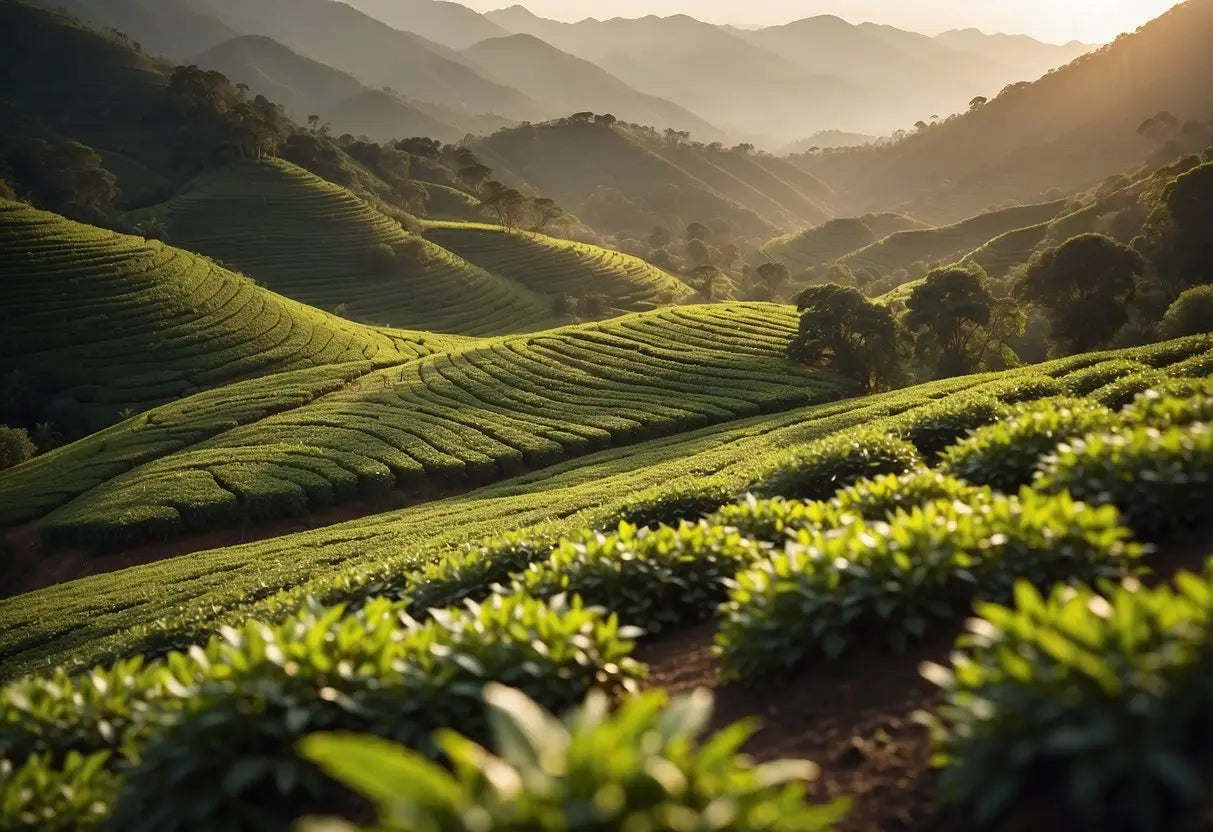
Lapsang souchong requires specific geographic conditions to thrive, and the choice of tea plant variety also plays a crucial role in its cultivation.
Geography and Terroir
Lapsang souchong is primarily cultivated in the Wuyi Mountains of China's Fujian Province. This region's high altitude and cool, misty climate are ideal for growing this unique tea. The soil in Wuyi is rich in minerals, contributing to the tea's distinctive smoky flavor and aroma.
The terroir influences the tea's quality and taste. The specific climate, altitude, and soil composition create the ideal environment for the tea plants. Rainfall patterns and seasonal temperature variations further enhance the tea's unique characteristics.
Varieties of Tea Plants
Lapsang souchong is typically produced from the Camellia sinensis var. sinensis plant. This variety is chosen for its adaptability to the mountainous terrain and cooler climate of the Wuyi region.
The selection of the tea plant variety impacts the final product. Camellia sinensis var. sinensis, known for its small leaves, produces a tea with mild and delicate flavors. The cultivation process, including pruning and harvesting techniques, ensures that the leaves are of high quality and suitable for the smoking process that defines lapsang souchong.
Health Benefits
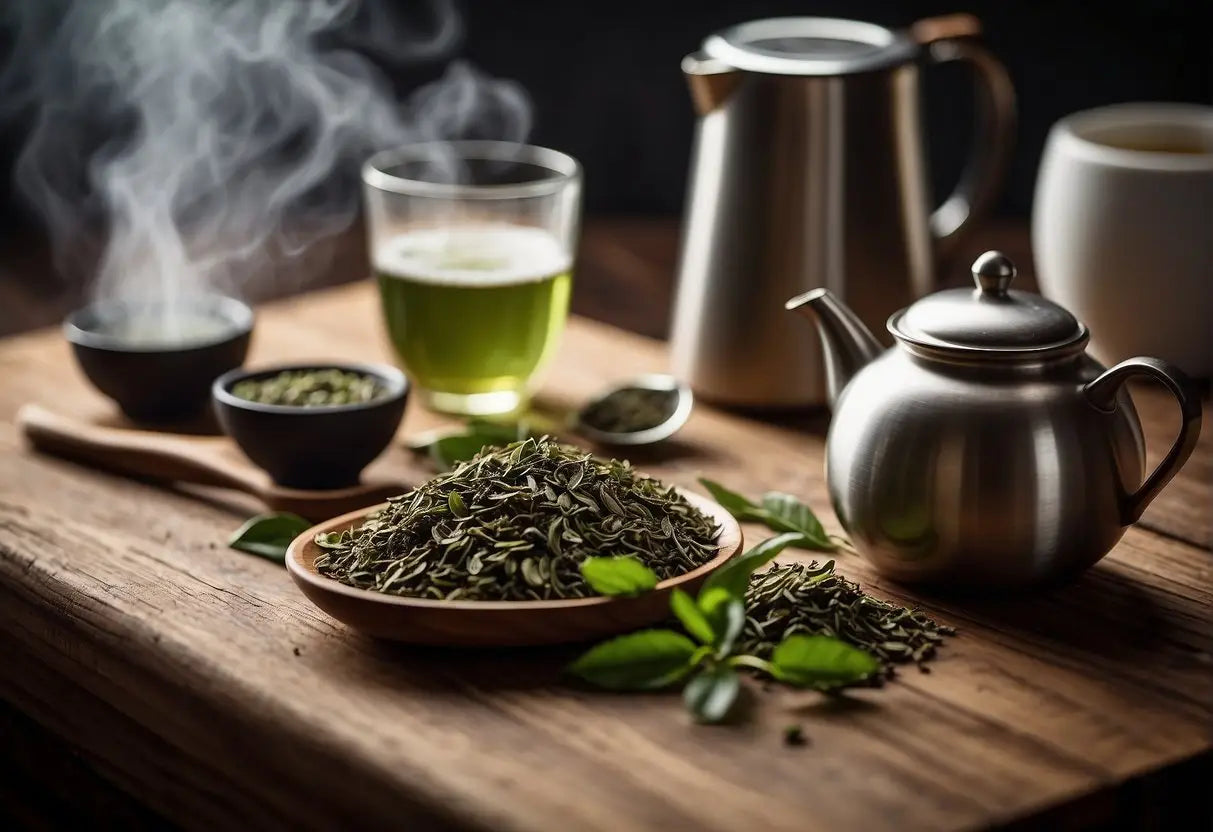
Rich in Antioxidants
Lapsang Souchong contains polyphenols, which act as antioxidants. These compounds can help protect your cells from damage by free radicals.
May Promote Heart Health
Studies suggest that the antioxidants in this tea could improve heart health. Drinking it might help reduce bad cholesterol levels.
Possible Weight Management
Some research indicates that black tea varieties like Lapsang Souchong can aid in weight management. This could be due to its potential to boost metabolism.
Improves Digestion
Consuming Lapsang Souchong may improve digestion. The tannins in the tea can have a calming effect on your digestive system.
Reduces Stress
The aroma of Lapsang Souchong could help reduce stress. Simply inhaling its distinctive smoky scent can have a calming effect.
| Nutrient | Benefit |
|---|---|
| Polyphenols | Antioxidant protection |
| Catechins | Weight management |
| Amino Acids | Stress reduction |
Supports Oral Health
Tea compounds like tannins may also promote oral health. They can help reduce bacteria and decrease plaque formation.
May Enhance Mental Alertness
The caffeine content in Lapsang Souchong may enhance mental alertness. Drinking it could help you stay focused and improve concentration.
Enjoying a cup of Lapsang Souchong offers both a unique flavor and potential health benefits. Integrating it into your routine can be a flavorful way to support your well-being.
Brewing and Drinking
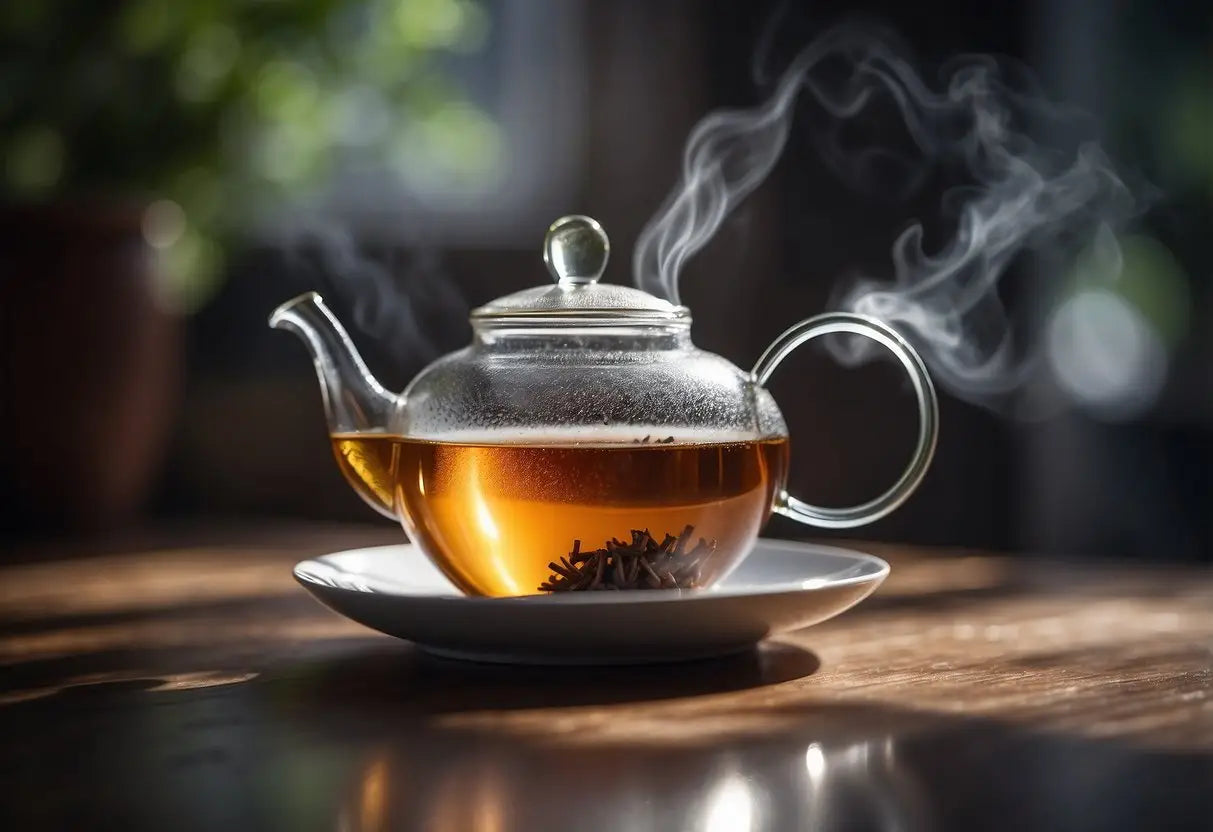
Brewing Lapsang Souchong requires specific techniques to bring out its unique smoky flavors, and certain foods complement its bold profile perfectly.
Brewing Techniques
To brew Lapsang Souchong, start with fresh, filtered water. Heat the water to around 200°F (93°C). Use 1 teaspoon of loose tea leaves per 8-ounce cup.
Place the leaves in a teapot or infuser, then pour the hot water over them. Let the tea steep for approximately 3-5 minutes. For a lighter flavor, steep for a shorter time, and for a stronger taste, steep longer.
Strain the leaves before serving. For multiple infusions, increase the steeping time by 30 seconds for each subsequent brew. Adjust these times and quantities to your personal taste preferences.
Pairing with Food
Lapsang Souchong pairs well with savory and robust foods. The smoky flavor complements grilled meats, like steak or lamb. It also enhances the taste of barbecued dishes.
Cheeses, particularly strong varieties like Gouda or aged Cheddar, pair nicely with this tea. For a snack, try roasted nuts or smoked salmon.
For desserts, dark chocolate and those with caramel notes work well. The tea can also be used as a cooking ingredient to add a smoky depth to sauces and marinades.
Differences From Other Black Teas
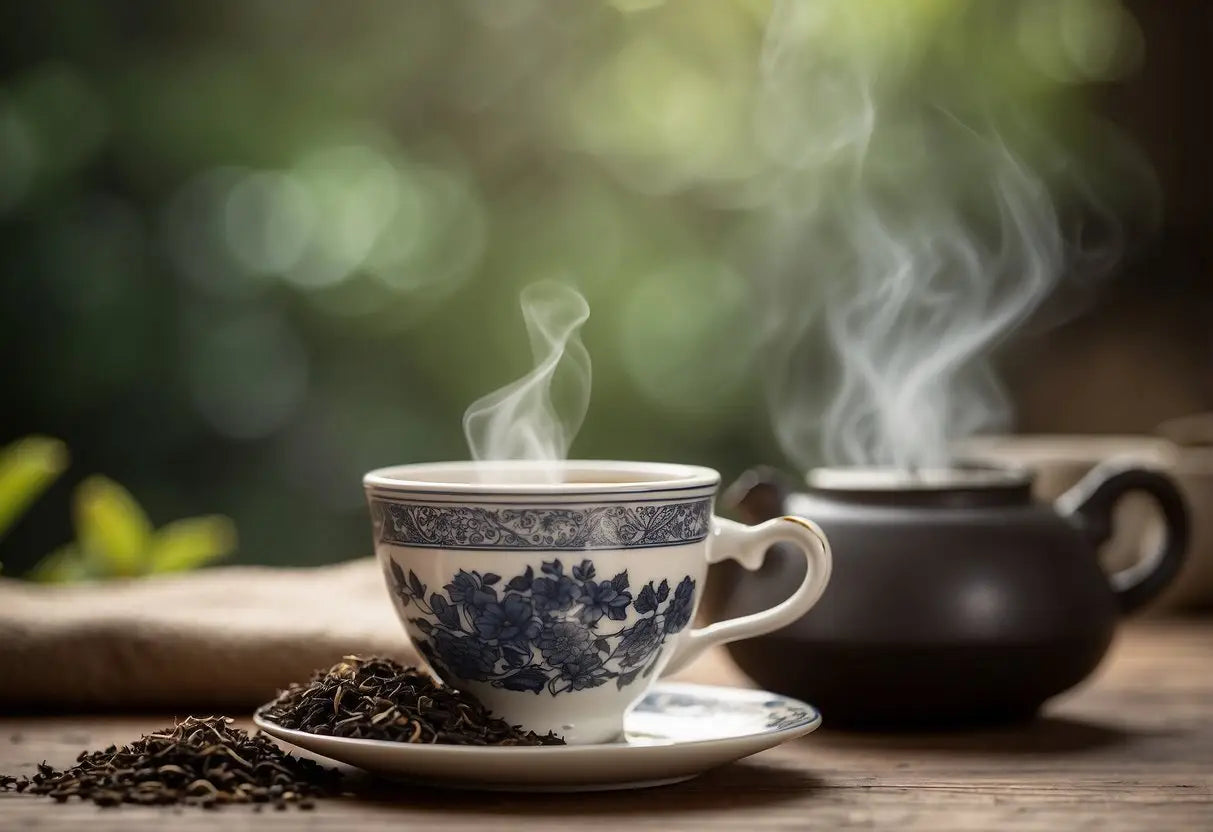
Lapsang Souchong is distinctively different from other black teas due to its unique production process. Unlike other black teas, it is smoked over pinewood fires, which imparts a strong, smoky flavor.
Other black teas, like Assam and Darjeeling, do not undergo this smoking process. Instead, they focus on natural oxidation, leading to a variety of flavor profiles but without the characteristic smokiness.
Flavor Profile:
- Lapsang Souchong: Smoky, pine, slightly sweet.
- Assam: Malty, creamy, full-bodied.
- Darjeeling: Floral, musky, light-bodied.
Production Areas:
- Lapsang Souchong: Wuyi region, China.
- Assam: Assam region, India.
- Darjeeling: Darjeeling region, India.
Processing:
- Lapsang Souchong: Smoked over pinewood fires.
- Other Black Teas: Withered, rolled, and oxidized without smoking.
Lapsang Souchong's unique method of smoking distinguishes it not only in flavor but also in aroma. This smoky character can be polarizing, either strongly appreciated or disliked.
While other black teas can be enjoyed with milk and sugar, Lapsang Souchong is often enjoyed plain or with a touch of honey to complement its bold flavor.
Some may find the smokiness of Lapsang Souchong similar to certain types of lapsang whisky or smoked foods, making it a unique addition to the world of black teas.
Purchase and Storage
When purchasing Lapsang Souchong, seek out quality vendors who specialize in fine teas. Specialty tea shops and reputable online retailers often provide the best selection and quality.
Tea leaves should appear whole and uniform. Avoid broken leaves or dust.
Check the aroma. Fresh Lapsang Souchong will have a distinctive smoky scent. If the scent is weak or musty, the tea may be past its prime.
For storage, keep the tea in an airtight container. Opaque or light-blocking containers work best to preserve flavor.
Store in a cool, dark place away from strong odors. Heat and light can degrade the tea's quality over time.
Avoid storing the tea in the refrigerator or freezer. The moisture can cause mold and deteriorate the tea leaves.
Use dry utensils when scooping tea to prevent introducing moisture to the storage container.
← Older post Newer post →











